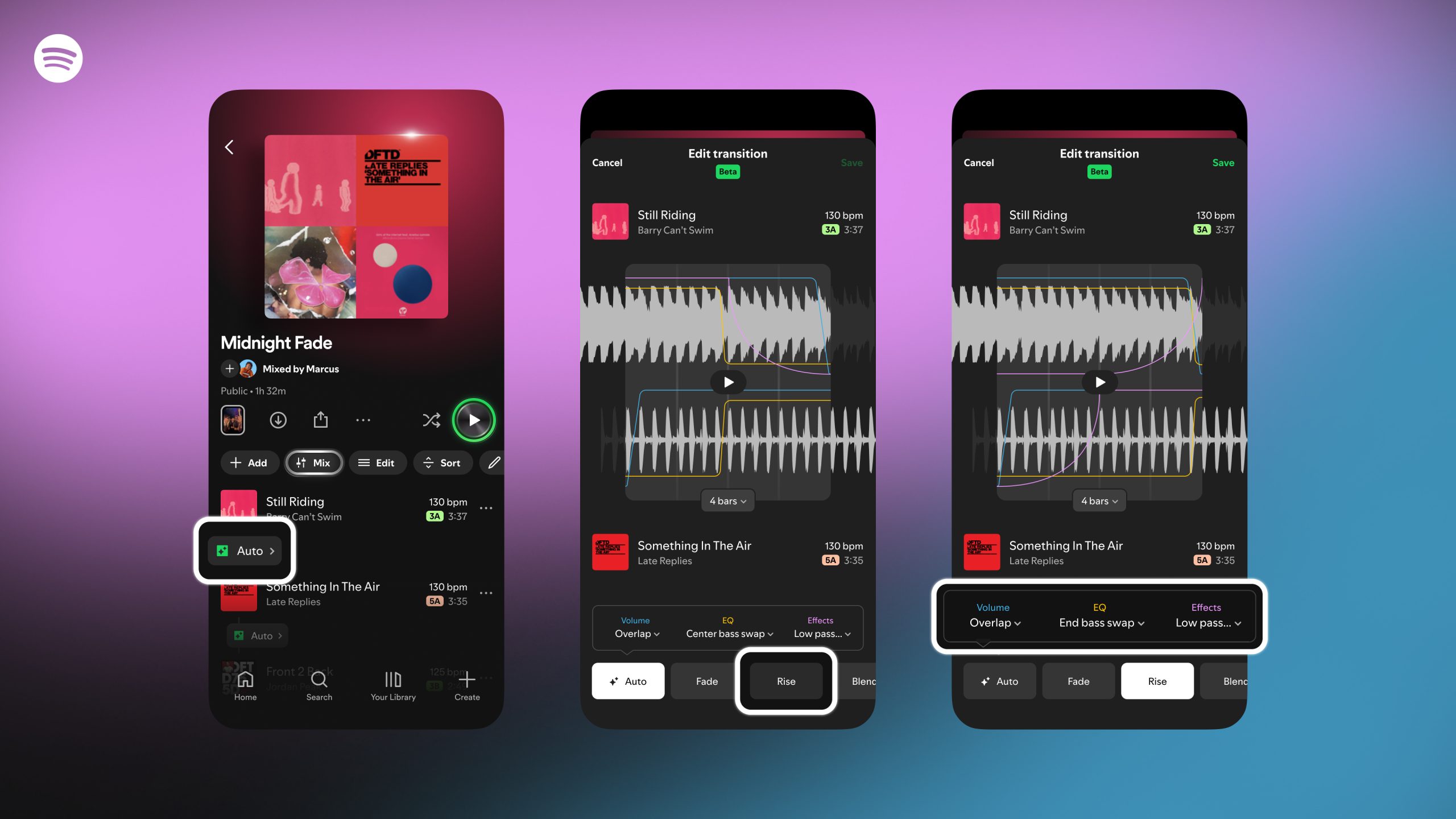- Spotify has rolled out a new audio mixing tool for playlists in beta for Premium subscribers
- Users can now customize transitions between songs in their playlists
- The new feature rivals Apple Music’s AutoMix and after testing both, Spotify’s stands out more
Spotify has released lots of features to help you get more creative with your playlists, but its new audio mixing feature takes this to a different level – and it could knock Apple Music’s AutoMix out of the spotlight.
Now in beta for Premium subscribers, the new audio mixing function lets you transition seamlessly between songs in new and existing playlists by tapping the ‘Mix’ button in the filter toolbar.
From there, tabs will appear between each track in your playlist marking each transition, and you can go the extra mile and customize them yourself.
When enabled, the ‘Auto’ preset will be applied to your transitions, which means that Spotify will automatically transition the songs for you.
You can also tap the tab and select transition presets such as ‘Melt’ and ‘Wave’, or create your own transitions by playing around with its volume, EQ, and effect curves functions to craft a perfectly-blended playlist from start to finish.
While Apple Music’s AutoMix function does the DJing for you, Spotify’s audio mixing tool puts you directly in the maestro’s shoes. I’ve experimented with both, and though I was pleased with how AutoMix performed, Spotify’s version is quite the standout. Here’s how it went down.
Hands-on with Spotify Mix: the good and bad

Spotify’s Mix function is an adequate music transition feature that, despite needing a little more attention in some areas, can definitely grow. It’s not totally different to Apple Music’s AutoMix – both are essentially glorified crossfade features – but Spotify’s works every time, while AutoMix performs best when mixing singular genres.
Appearance-wise, Spotify’s tool looks like professional music mixing software, which can be daunting at first for newbie audio-mixers (like myself). But once you find your footing, you can create a seamlessly blended playlist.

Customizing your transitions is fairly straightforward, but I found the easiest method to be selecting one of the presets first, and then fine-tuning it. That way, it does some of the dirty work for you, but like all of the best music streaming services, this feature does have some minor limitations.
The main setback I found is that, despite working in most cases, the Auto preset can sometimes misjudge timing, introducing the next song at a random part of the current one.
Additionally, the transitions sometimes occur quite abruptly, which can sound harsh to your ear when listened to on headphones. But if you shuffle a playlist of songs with a similar BPM, or queue songs with a similar BPM, that’s when the Auto preset really performs.
One of the other things to consider is that you have to customize each transition individually, so it can be fiddly and time consuming, especially if you like to make playlists that go on for hours and hours. However, it’s not necessarily designed for longer playlists, so I’m not ruling it out just yet.
Party playlists just got better
Spotify’s Mix tool is particularly suited to playlists that you’ve made for parties and social gatherings, especially when all the songs in a playlist have similar BPM. In those cases, it’s a lot easier to hit the nail on the head when it comes to customizing a transition, and it means the Auto preset will work a lot better when you listen to a playlist on shuffle.
But it’s not just a great way to enhance your more up-beat playlists – it can also work with mellow playlists that you’ve created to help you be more productive, or simply sit back and unwind. It’s quite versatile, which is ideal if you have multiple genre or vibe-specific playlists.
Overall, I think that Spotify’s audio mixing tool is a huge step for the streaming platform, giving users greater creative freedom with their playlist curation and soundtracking. While it’s not designed to suit every type of playlist out there, it has potential to evolve and become one of Spotify’s best features.
